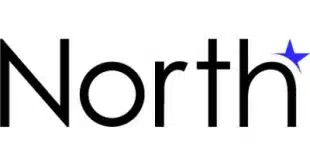Here’s why this efficient payment method is steadily overcoming doubts to establish itself as a safe, efficient—and fast—alternative to cards.
From instant-payment processing times to real-time account access and the option to choose from multiple payment options, the modern digital economy is driven by demands to provide businesses and consumers with efficient, fast, and secure ways to conduct financial transactions.
Now, as the payments landscape evolves, financial institutions and businesses must monitor trends and spending habits while leaving room for technological advances.
One payment solution that is gaining traction in this space is pay by bank. Also known as account-to-account (A2A) payments, this method allows users to make transactions directly from their bank accounts, bypassing traditional card networks and offering a range of benefits.
Pay-by-bank transactions typically use payment rails such as the automated clearing house network, FedNow Service, and RTP network to transfer money from one bank account to another.
Despite its advantages and growing popularity in Europe and Asia, A2A adoption in the United States has been slow. This hesitancy is largely due to consumer concerns about security and privacy. However, as we delve deeper into the realities of pay-by-bank transactions, it becomes clear that these concerns are often based on misconceptions and are limiting the potential to expand the U.S. payments landscape.
Understanding the Mistrust
The primary driver of mistrust in A2A transfers is fear of fraud through unauthorized transactions and potential account takeovers. In a recent report by Visa, 73% of consumers cited security and trust as the number one influence when selecting a payment type.
While security concerns with bank-to-bank transfers are understandable, they’re often misplaced. In fact, compared to paper checks and credit cards, A2A transactions have the lowest fraud rates.
Indeed, when implemented with robust security measures, pay by bank can be one of the safest and most streamlined payment methods available. Customers have greater control over their payments, directly authorizing transactions and details.
Due to these added benefits, the adoption of pay-by-bank payments is on the rise. Visa’s report found that 93% of U.S. consumers have made an A2A payment, and almost 70% have made a payment enabled by open banking.
As pay by bank increases in popularity, some might wonder how it differs from debit card payments. The answer lies in the cost-effectiveness and efficiency of pay-by-bank transactions. For merchants, pay-by-bank transactions avoid the traditional card networks and their associated fees, making these payments generally less expensive to process than debit card payments.
Additionally, A2A transactions offer enhanced security features that aren’t always available with debit cards. These include real-time fraud detection, advanced encryption, and tokenization of sensitive information. The direct bank-to-bank nature of these transactions also reduces the number of intermediaries involved, minimizing potential points of vulnerability.
Security Concerns
To ensure the utmost security in pay-by-bank transactions, fintechs are implementing highly advanced technologies and protocols. These include:
- Open-banking integrations that provide secure, standardized ways for third-party providers to access financial data with user consent.
- Strong customer-authentication measures, often involving multi-factor authentication.
- Advanced encryption and tokenization to protect consumer data and financial information.
- Real-time transaction-monitoring and fraud-detection systems powered by artificial intelligence (AI) and machine learning (ML).
- Robust consumer-protection policies and regulations that safeguard users against unauthorized transactions.
It’s important to note that these security measures are not static. Financial institutions across the industry continue to find new ways to improve security protocols and provide innovative safety features. As potential threats emerge, so do new defensive technologies and strategies, which is where AI and ML can drastically help organizations minimize risks and address concerns as they happen.
Furthermore, the regulatory landscape is evolving to keep pace with these technological advances. Bodies such as the Consumer Financial Protection Bureau (CFPB) are working on comprehensive frameworks for open banking and A2A payments, ensuring that consumer protection remains at the forefront.
Recognizing the Advantages
The benefits of pay by bank extend beyond security. For businesses—especially those in industries with high transaction volumes or recurring payments—pay by bank offers lower fees, faster settlements, and reduced chargebacks. Consumers benefit from the convenience of digital payments and increased control over their financial data.
Pay by bank also offers significant advantages in terms of financial management and cash flow. For businesses, faster settlement times mean improved liquidity and more accurate real-time financial reporting. This can be particularly beneficial for small and medium-size enterprises that often struggle with cash-flow issues.
For consumers, pay-by-bank transactions provide a clearer picture of their spending, as the money is directly debited from their account, helping with budgeting and financial planning. Additionally, the reduced risk of overdraft fees—which are common with traditional debit card transactions—adds another layer of financial security for users.
As the U.S. market continues to adopt pay-by-bank solutions, it’s crucial for businesses and consumers alike to understand both the convenience and the security aspects of bank-to-bank transactions.
The future of payments is digital, and pay by bank is poised to play a significant role in this transformation. The misplaced mistrust surrounding this payment method will likely fade as more businesses and consumers experience its benefits firsthand.
Indeed, with continued investment in security measures and user education, pay by bank has the potential to become the preferred payment method for millions of Americans, offering an impactful blend of convenience, cost-effectiveness, and security.
—Dave Glaser is chief executive of Dwolla




